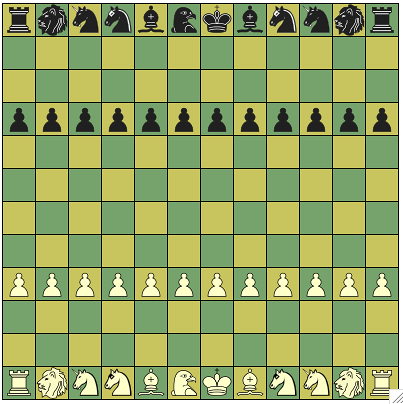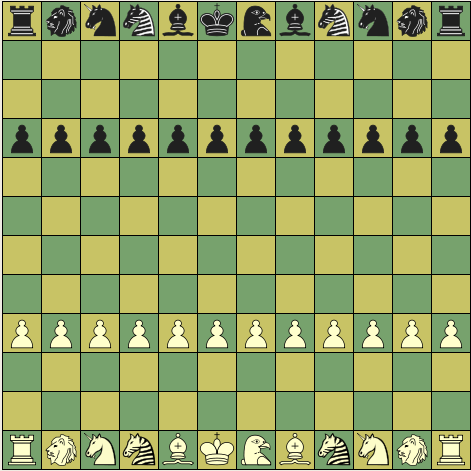
Not that it actually plays the game yet.
Moderators: hgm, Rebel, chrisw


Well, for describing the Tamerlane Picket, f.e., you could use yafF which steps one and then slides further in the same direction. But you could also have said mafB, which slides as Bishop to an empty square and then again as Bishop. Any N+M slide with N>1 could also have been made as an (N-1)+(M+1) slide, and is thus redundant (duplicating an already existing move). So 1+M already provides everything N+M could provide, when they go in the same direction. So it doesn't hurt to use a slider move for the step to the blocking square. It is just that each distant destination would be generated multiple times.Evert wrote:Actually, I'm not entirely sure now it really does what it must do: the Giraffe is basically a lame-leaper for its initial move, moving once as F, then as nH and then finally sliding onward as a rook. Does that work?



Well, pages suggest that this is the likely rule, but of course they also list likely incorrect moves for the pieces.hgm wrote:If you would want it to inherit those rules, then that would indeed be the only way to do it.
I am not so sure it had this rule, however. Unlike in Shatranj, where only Rook has mating potential, and even Knight + Ferz or 2 Knights don't have it, a lot of pieces here have mating potential, and Pawns do not promote to a worthless Ferz. If stalemate is a win, even more pieces might have mating potential. (But I guess that the only way to make it inherit the stalemate-is-a-win rule is also to make the parent Sjatranj. Xiangqi or Shogi do not seem suitable.)

Code: Select all
perft 4
1 59 0.00 830985.92nps
2 3481 0.00 1064851.64nps
3 206209 0.09 2323769.71nps
4 12200523 4.91 2487284.41nps
